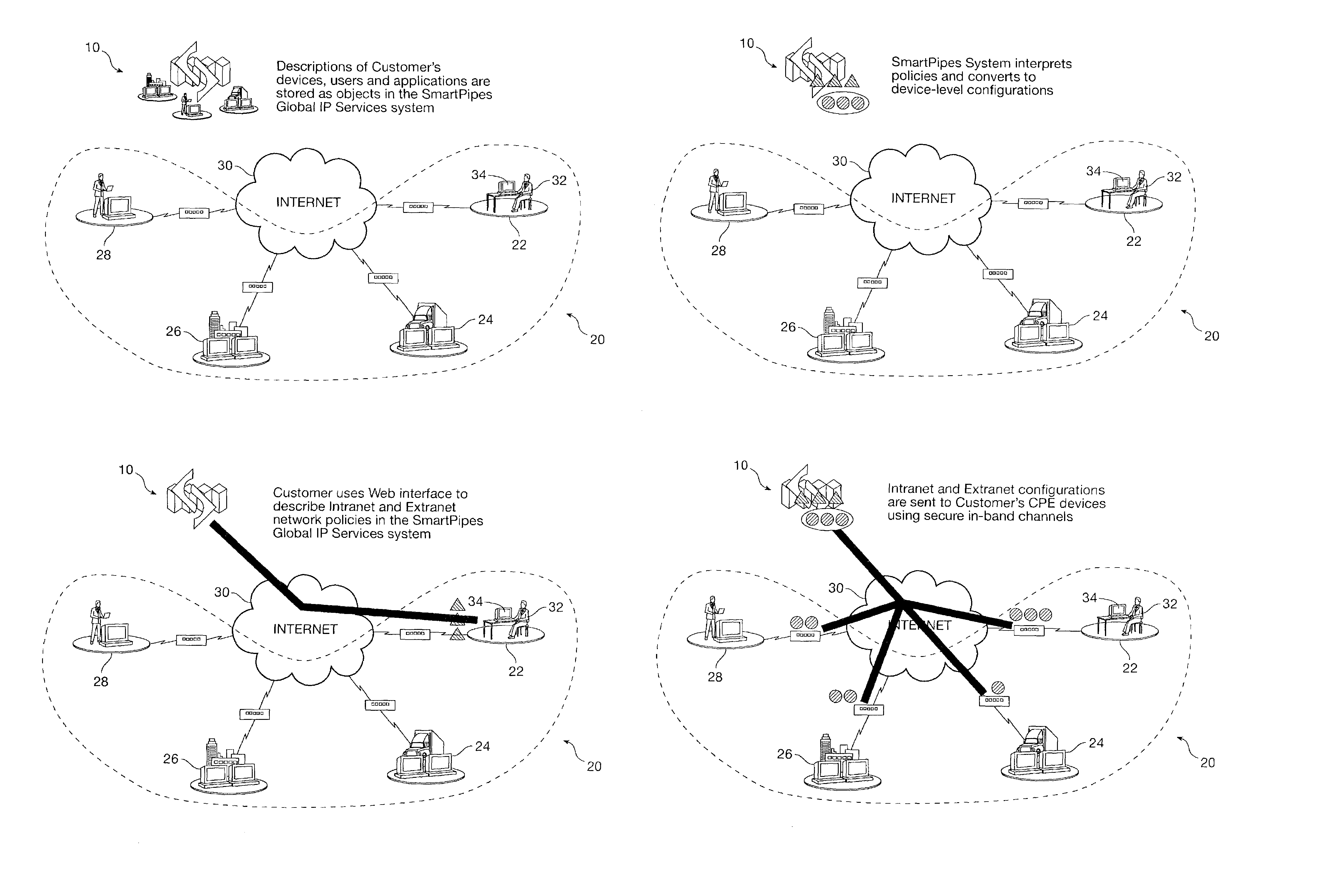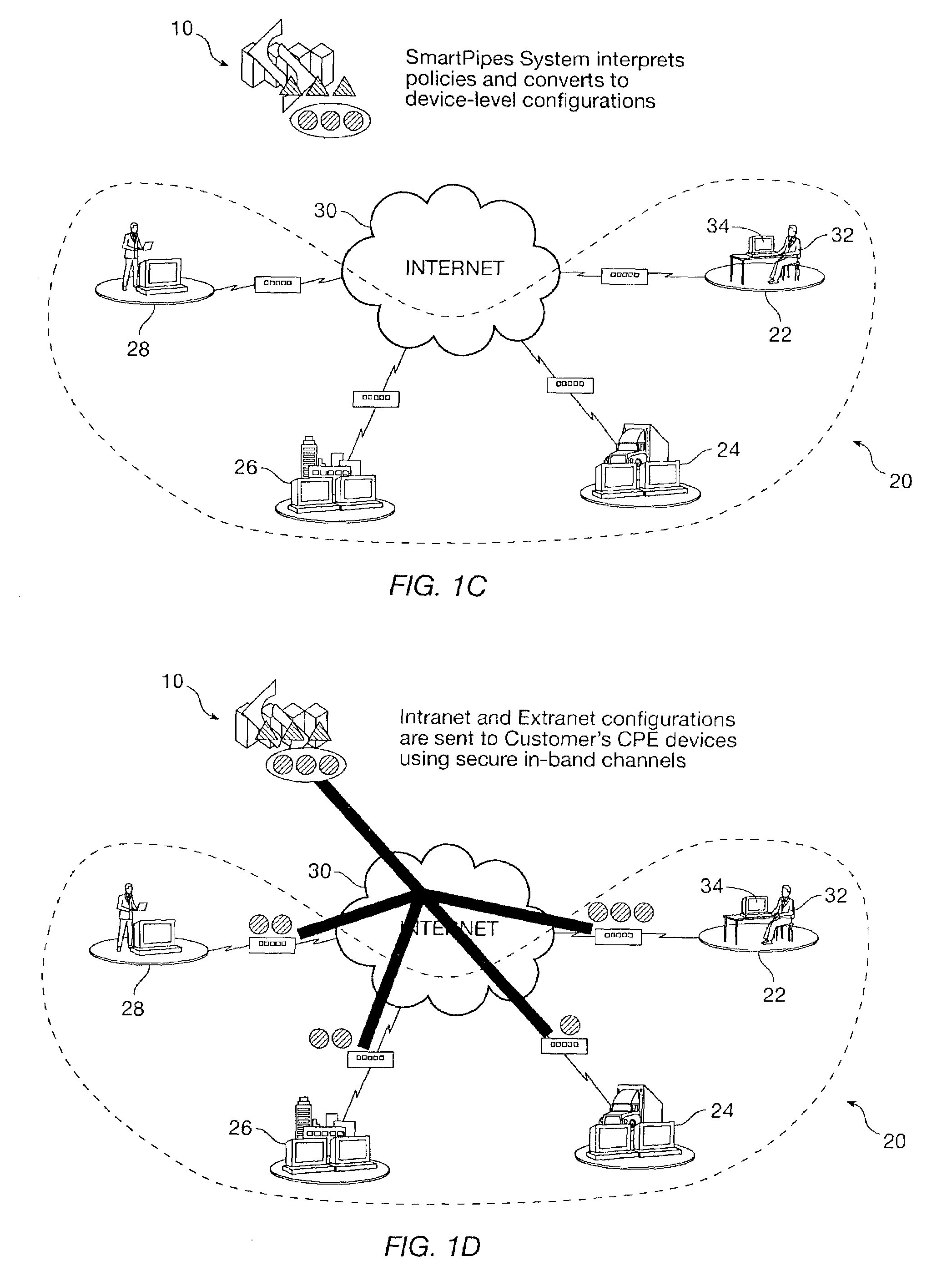Policy engine for modular generation of policy for a flat, per-device database
a policy engine and database technology, applied in the field of communication network management and control, can solve the problems of increasing complexity of new generation of high-performance network devices, increasing complexity of communication network systems, and increasing complexity of new generation of network devices
- Summary
- Abstract
- Description
- Claims
- Application Information
AI Technical Summary
Benefits of technology
Problems solved by technology
Method used
Image
Examples
Embodiment Construction
A. Overview of the Operational Stages of the System
[0033]The present invention provides policy-based outsourced network management system at a service center and thus manages and controls a communication network having multiple network device types over a network (e.g., the internet). The management of a typical communications system by the outsourced management system of the present invention is briefly shown in FIGS. 1A–1F, described below.
[0034]FIG. 1A shows a customer communications network 20 (shown inside the dashed perimeter lines and composed of network service points 22, 24, 26 and 28) that is coupled to the management system 10 via internet 30. Each network service point may include a number of network devices, such as routers, hubs, printers, facsimile machines, computer systems, etc. In FIG. 1A, internet 30 is shown as the communications medium via which customer 32 using his computer system 34 communicates with management system 10. The customer's devices are stored as ...
PUM
 Login to View More
Login to View More Abstract
Description
Claims
Application Information
 Login to View More
Login to View More - R&D
- Intellectual Property
- Life Sciences
- Materials
- Tech Scout
- Unparalleled Data Quality
- Higher Quality Content
- 60% Fewer Hallucinations
Browse by: Latest US Patents, China's latest patents, Technical Efficacy Thesaurus, Application Domain, Technology Topic, Popular Technical Reports.
© 2025 PatSnap. All rights reserved.Legal|Privacy policy|Modern Slavery Act Transparency Statement|Sitemap|About US| Contact US: help@patsnap.com



